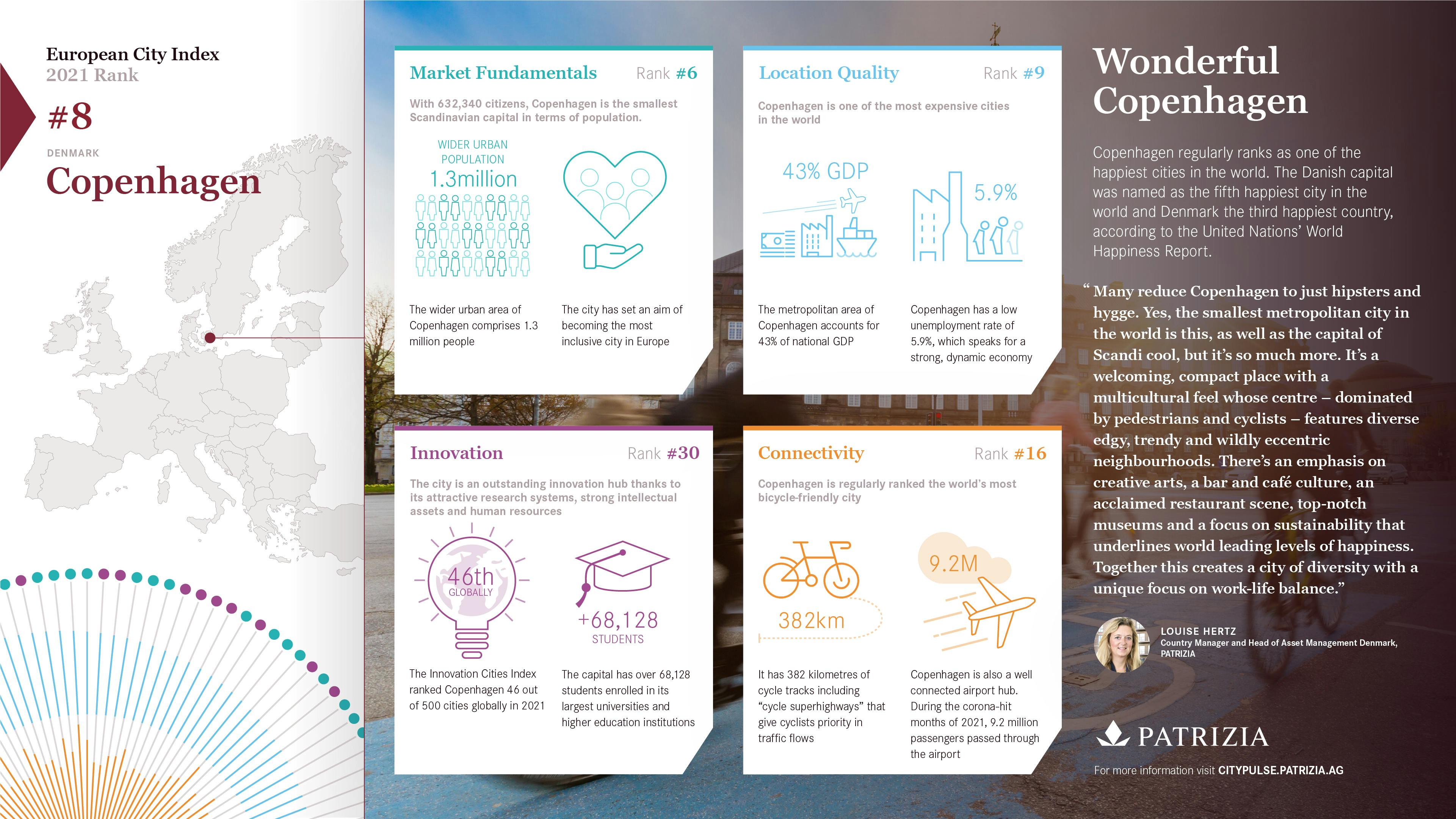Wonderful Copenhagen: Happiness, Liveability and Growth
København (Copenhagen) continues to rank as one of the happiest cities in the world, consistently featuring near the top of the UN's World Happiness Report. But while liveability indexes measure concrete factors such as infrastructure, connectivity and incomes – what makes a city a happy place? And in particular, why do Nordic cities top the rankings every time?
In 2023, København remains a prime example of how a city can excel in both happiness and liveability. This is mainly due to strong social trust, a well-functioning democratic system, and a robust welfare state that ensures access to quality healthcare, education, and a balanced work-life culture.
Danes enjoy comprehensive maternity and paternity packages, and the average working week for private-sector employees is just 37.5 hours. These factors contribute significantly to Copenhagen's residents' high satisfaction levels.
Sustainability and Urban Planning
Copenhagen remains a global leader in sustainable urban planning. The city is steadfast in its goal to become carbon neutral by 2025, making significant strides toward this ambitious target. With 50% of residents already commuting by bicycle, the city aims to increase this figure to 75%.
The innovative Amager Resource Centre, which doubles as a waste recycling facility and a leisure park featuring the world's highest climbing wall and a ski slope, exemplifies Copenhagen's creative approach to sustainability. This forward-thinking urban development is designed to enhance the quality of life while minimising environmental impact.
Housing Market and Growth
Copenhagen's housing market is under pressure due to its popularity as a highly liveable city. Housing shortages and rising prices are ongoing challenges that the Danish capital is actively addressing. The municipality is reviewing strategies to meet the growing demand while ensuring price stability, recognising that maintaining Copenhagen's cultural values and quality of life is essential as the city grows.
This approach emphasises the importance of understanding the cultural and social dynamics that drive Copenhagen's appeal, making it clear that successful investment in the city requires a deep appreciation of its unique character.
Copenhagen's reputation as one of the most liveable cities in the world is well-earned. With its robust economy, excellent educational opportunities, and comprehensive social security, the city offers a high standard of living. Furthermore, Copenhagen's pioneering efforts in sustainable urban planning –boasting one of the most extensive cycling networks globally and aiming for carbon neutrality by 2025 – set it apart as a model for cities worldwide.
Anders Klingbeil, Country Manager and Head of Asset Management at PATRIZIA, Denmark
PATRIZIA City Snapshot


7
Copenhagen’s Market Fundamentals Ranking
With 623,404 citizens, Copenhagen is the smallest Scandinavian capital in terms of population and ranks among the most dominant in the index with a 10.7% share of its national population. The population is forecast to increase by 8% by 2028, while the old-age dependency (OAD) ratio* of 14.8% is the lowest of any Western European capital. Only one other city in the Index, Manchester, has a lower OAD. The employment-to-population ratio of 66.3% is considered strong.
Interesting City Facts





